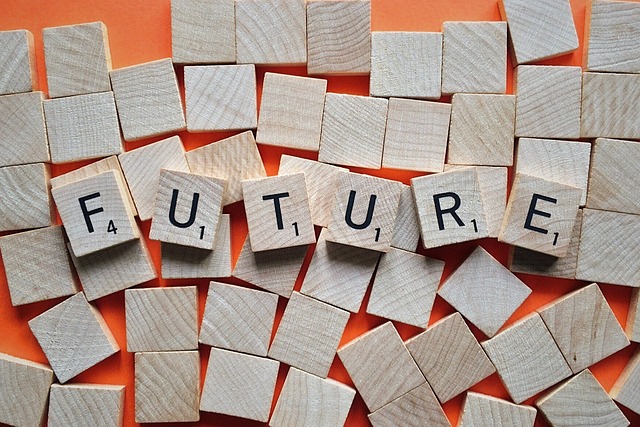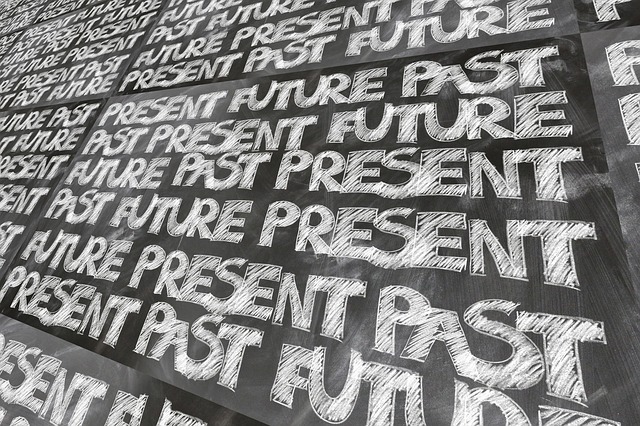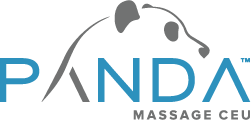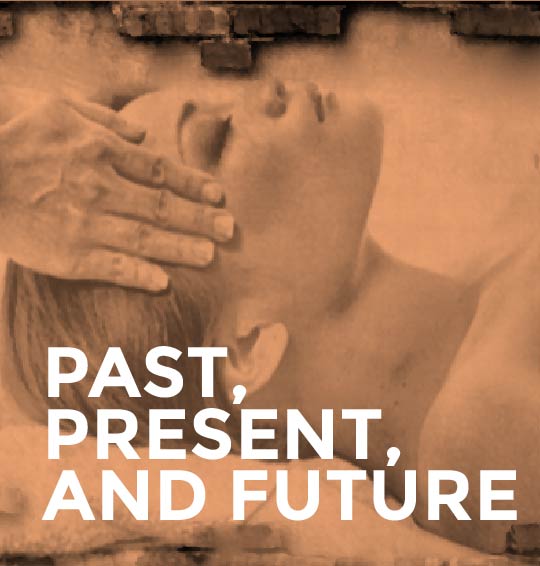Past, Present and Future: A Massage Therapy CEU Course – Outline and Learning Outcomes
Massage therapy is a truly fascinating profession. Many bodyworkers find themselves drawn to the occupation because of an interest in health, the human form, and healing. Indeed, running a practice is an incredibly rewarding experience in many ways. When clients come to see you, they might present with any number of issues. One client may seek out massage because of an acute injury; another may be under huge amounts of stress, and in need of relief and relaxation. In other cases, new clients seek out treatment because of long-standing, chronic issues which may have been problematic for years (or even decades). Regardless of the situation, you do your best to implement a wide variety of techniques and modalities to treat your clients, offering them the best care possible and aiming to alleviate their issues.
Part of what’s so rewarding about practicing massage is the variety that it brings to your day-to-day experience of your work environment. One day, you might perform a Swedish massage; the next, you might use hot stones or deep tissue therapy; later in the week, you could utilize cupping on a patient with circulation issues.
Do you ever wonder about how all of these varied techniques have come to be understood as something called “massage therapy?” How did they all end up under the same umbrella? Where did these disciplines originate, and how were they woven together over time into the modern occupation that you now practice?
If these thoughts have crossed your mind, you’re not alone. That’s why Panda Massage CEU™ has created this course, entitled “Past, Present and Future.” In this course, we’ll explore the history of bodywork; modern practices; and the future of the profession. Wondering what exactly the class entails? Read on to learn more.
Learning Objectives for Past, Present and Future: A Massage Therapy CEU Course

Right now, you might be asking yourself a few questions about this class. Is it the right choice for you? What exactly will it involve? What are its learning outcomes? In other words, once you complete this course, what will you have learned?
We know that signing up for an online class isn’t just a question of monetary cost: it’s also a matter of committing time and energy to something. We appreciate and value the fact that you have a limited amount of time in your schedule, and we don’t want to waste it. That’s why, below, you’ll find a list of the learning outcomes for this course.
After you’ve had a look at what you can expect to learn from this course, you’ll be able to decide whether or not it’s right for you. Additionally, you’ll make things easier on yourself as an adult learner. How? Adult learners are generally highly motivated, but also somewhat less accustomed to the educational process than younger learners. By taking the time to review what you’ll learn in this course, you can gain an understanding of the overall content of the class and set yourself up for success.
Generally speaking, our Past, Present and Future massage course will cover a wide range of topics, such as: the history and origins of massage; major contributors to the profession; technique specific to particular therapeutic modalities; professional aspects of the occupation; industry concepts and applications; state board exams and licensing requirements; and more.
Let’s take a look at the learning outcomes for this course in greater detail. Specifically, once you’ve completed this course, you should be able to:
Summarize the history and origins of massage therapy
Have you ever wondered about the origins and history of your profession as a whole? That’s why we created this program! You’ll learn about the history and origins of massage therapy, which will inform your practice and appreciate of the profession in its entirety.
List and describe key contributors in the industry
Part of learning about the history of this discipline is developing an awareness and appreciation for its major figures. Throughout the course of history, countless individuals have contributed to the development of bodywork and its associated modalities. You’ll learn about some of these key figures, and what they brought to the table (figuratively and literally) across the centuries.
Define and describe techniques specific to particular modalities
There are so many modalities associated with bodywork in the modern world. When you take into account thousands of years of history, the number skyrockets! You’ll learn about dozens of techniques and modalities, and how to define and describe each of them.
Explain professional components of massage therapy
Bodywork is a complex profession. How do you account for its various professional components? In this class, you’ll learn how to explain the array of professional component associated with massage.
Compare and contrast past, present, and future industry concepts and applications
When dealing with a profession that’s been around for as long as bodywork, it’s a bit of an understatement to say that things have changed over the years. As part of this program, you’ll learn how to compare and contrast the past, present, and future concepts and applications associated with the industry.
Describe standards for state board examinations and licensing
Rules, regulations, and standards related to massage vary from state to state. As part of this course, we’ll discuss these in detail and give you the tools you need to understand how licensing works from state to state.
List industry associations and organizations
The present and future of the occupation are molded by industry organization and associations. In this course, we’ll provide you with information on active organizations in the world of massage.
Course Outline

Congratulations on becoming acquainted with the learning outcomes for this class! You should now have a confident understanding of what you can expect to gain. That said, you might still have a few questions. What exactly is covered in this class? What’s left out? Does the course go into a ton of detail, or is it just an overview of most of the topics presented? How exactly is the course structured? What’s the layout look like? All in all, is this the right class for me?
We understand that taking a class like this is a big decision, and we’re happy to give you answers to these questions. If you scroll down, you’ll find an extensive outline of our Past, Present and Future massage program. Not only will this outline help you understand what’s in the class itself: it’ll also help you prepare. Once you’re familiar with the program’s contents, you’ll know which areas you’re less familiar with, and you can decide where you might need to focus extra attention and energy while taking the class.
Massage in Prehistory
Believe it or not, bodywork has been around for thousands of years. In fact, cave paintings from nearly 20,000 years ago depict it in action. We’ll discuss the earliest origins of the profession based on our current data and awareness.
Ancient China and Japan
Records from ancient China and Japan give us some interesting information on massage, especially in terms of how it came to interface with traditional Chinese medicine, acupuncture, herbalism, and more. We’ll examine the development of the discipline in both cultures, including Shiatsu in Japan.
Ancient Egypt and India
When we think “history of bodywork,” our minds don’t necessarily jump straight to ancient Egypt. Surprisingly, though, tomb images there give us some insight into the origins of the practice in that part of the world. Meanwhile, Ayurvedic medicine came to incorporate bodywork into its methodology. We’ll examine both ancient Egypt and India as part of this class.
Ancient Greece and Rome
Bodywork in both ancient Greece and Rome took on a number of forms. On the one hand, we have hydrotherapy. Many are familiar with the Roman baths, and the practice of using water as a kind of treatment. Additionally, though, Hippocrates (the father of Western medicine) and many other figures had much to say about our profession. We’ll discuss both ancient Greece and Rome in this program.
Medieval Europe and the Arab World
While medical development may have slowed down during the Medieval period in western Europe, there was considerable development happening simultaneously in the Arab world. We’ll examine the interplay of both, and what they contributed to the occupation as we know it today.
Renaissance Europe
The Renaissance, or “rebirth” of Europe, occurred following the Middle Ages. Much was contributed to the modern world of bodywork, including dissection and the development of knowledge surrounding human anatomy. In this class, we’ll examine these contributions in detail.
Modernity and Per Henrik Ling
Following the Renaissance, we begin to enter the realm of modern massage. In particular, Per Henrik Ling is a notable figure. Often credited as the father of Swedish massage, Ling devised much of what is now modern massage therapy. We’ll discus Per Henrik Ling’s contributions in detail.
Great Britain, Hydrotherapy, and Osteopathy
Around the turn of the 19th century, the first massage organization was founded in Great Britain. Around roughly the same time, other developments occurred elsewhere. Father Sebastian Kneipp, the father of hydrotherapy, developed what he termed a cure for tuberculosis. Meanwhile, Andrew Taylor Still created what is now known as osteopathic medicine. We’ll take a close look at all each of these figures in this class.
Chiropractic
As a discipline related to bodywork, chiropractic is a fascinating topic to explore. In this class, we’ll examine its development in the late 19th century with Daniel David Palmer.
Rolfing and Reiki
In the 20th century, myriad developments emerged in the realm of bodywork. In Japan, Dr. Mikao Usui, a Japanese Buddhist, developed reiki therapy. Meanwhile, in the West, Ida P. Rolf began to work on a series of techniques that would eventually come to be known as Rolfing. In this course, we’ll examine the development of both Rolfing and reiki.
Reflexology and Orthopedic Medicine
In the mid- to late-20th century, Eunice Ingham devised what is now understood to be reflexology. Simultaneously, the English physician Dr. James Cyriax came to be revered as the “father of orthopedic medicine,” incorporating bodywork techniques into his treatment of orthopedic issues. We’ll discuss both of these figures in detail.
Chair Massage and Trigger Points
Today, using a chair (as opposed to a table) is a highly desirable way to provide services to clients in remote locations. It began rather humbly in the 1980’s with David Palmer. Not long before, Dr. Janet Travell, a highly reputed cardiologist, began to develop what would eventually come to be known as trigger point therapy. We’ll look at both chair massage and trigger point therapy in this course.
Neuromuscular Therapy
Neuromuscular therapy as we know it today came about as the result of both American and European influences in the 20th century, including chiropractors, naturopaths, and osteopaths. We’ll examine this history in detail.
Myofascial Release
While the term “myofascial release” was coined in the 1960’s, it wasn’t fully developed until a decade later. In this course, we’ll take a close look at the origins of this modality.
Cranio-Sacral and Sports
Developing during the second half of the 20th century, cranio-sacral therapy offers an holistic approach to healing throughout the body. Sports-related bodywork developed in the latter part of the last century, thanks in large part to Jack Meagher, the “father of sports massage.” We’ll delve into both modalities in this course.
The Future of the Occupation
With so much history behind us, the question remains: what’s the future of the occupation? By looking at current trends, we’ll attempt to address this inquiry in detail.
State Licensing Requirements
The world of massage is quite different from just a few decades ago. Regulations, laws, rules, and requirements exist in states across the country. What do licensing requirements look like now? Where are they headed? We’ll answer these questions, and give you the tools you need to understand licensing in your home state.
What are CEUs, and Why are They Important?
Most industry professionals are well aware of how important it is to continue their education each year. Keeping up with your education can take a couple of different forms. First and foremost, you’re continuing your education every time a client comes in for a treatment. This first-hand experience is essential to your professional growth and development. That said, though, it’s also incredibly important to move forward with your education in a more formal, traditional format. If you’re wondering how you can do that given your busy massage schedule, look no further. Online massage CEUs, or Continuing Education Units (GUIDE TO LMT CONTINUING EDUCATION), are the answer.
And don’t forget: while CEUs are important for your professional growth, they’re also a legal requirement all around the country. Indeed, a significant majority of states require that massage therapists obtain a minimum annual number of CEU hours (sometimes this minimum is calculated every two or three years) in order to maintain their licensure in that state. On top of this, if you’ve opted to obtain an NCBTMB National Certification credential (NCBTMB GUIDE), you’ll need to keep up with biennial CEU hours requirements in order to keep your certification current.
If you’re looking for an NCBTMB Approved CEU provider, congratulations! You’ve found one. Panda Massage CEU is proud to be a top-notch NCBTMB Approved Provider of CEUs. So, how does that translate to your CEU requirements? Not only will our courses meet NCBTMB standards for National Certification: they’ll also count towards your annual state licensure requirements.
Why Choose Panda Massage CEU?
We know you have other options when it comes to online massage CEU education. That said, we believe that we’re the best choice available anywhere. What makes Panda Massage CEU the right choice for you?
Quality
Other courses are of questionable quality. Not ours. As a premiere provider, we’re absolutely certain that you’ll be satisfied with our course offerings.
Unique Topics
Have you looked at other online course offerings? There’s one thing that other providers have in common: their topics are boring! We’re excited to offer a diversity of unique and engaging course options, include kinesiology, cupping, and more.
Professional Narration
Other online courses aren’t narrated at all. And, if they are, it’s subpar quality. We recognize how important professional narration is, and ensure that it’s incorporated into all of our online offerings.
Video Included
Video gives an online class a certain kind of feel: it makes it seem more like you’re there, in-person, learning the material. That’s why we include video with all of our programs.
Self-Paced
The modern world is hectic. We know how busy you are with your massage practice. That’s why we offer self-paced courses. No matter your schedule, you can fit our offerings into your day-to-day without it being a hassle.
Great Prices
Quality is great, but value is even better. That’s why we offering all of our courses at amazing prices to fit any budget. Plus, an online class will save you thousands: no travel costs associated with flights, mileage, hotel, food, and all the other costs that come with attending an out-of-state in-person course.


There are no reviews yet.